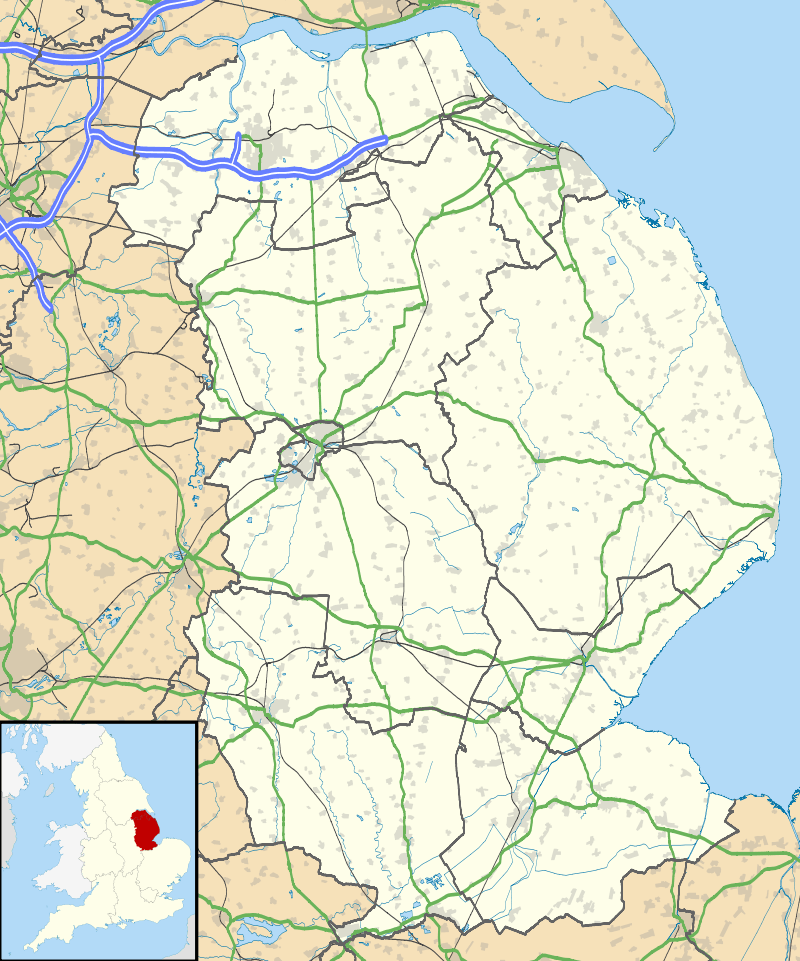Woolsthorpe-by-Colsterworth
| Woolsthorpe by Colsterworth | |
 Birthplace of Sir Isaac Newton |
|
 Woolsthorpe by Colsterworth |
|
| OS grid reference | SK925244 |
|---|---|
| – London | 95 mi (153 km) SSE |
| Civil parish | Colsterworth |
| District | South Kesteven |
| Shire county | Lincolnshire |
| Region | East Midlands |
| Country | England |
| Sovereign state | United Kingdom |
| Post town | Grantham |
| Postcode district | NG33 |
| Police | Lincolnshire |
| Fire | Lincolnshire |
| Ambulance | East Midlands |
| EU Parliament | East Midlands |
| UK Parliament | Grantham and Stamford (UK Parliament constituency) |
|
|
Coordinates: 52°48′36″N 0°37′44″W / 52.809863°N 0.628770°W
Woolsthorpe (formally known as Woolsthorpe-by-Colsterworth to distinguish it from Woolsthorpe-by-Belvoir in the same county) is a hamlet in the South Kesteven district of Lincolnshire, England. It is best known as the birthplace of Sir Isaac Newton.
Woolsthorpe-by-Colsterworth is 94 miles (150 km) north of London, 0.6 miles (1 km) northwest of the village of Colsterworth on the A1 – one of the UK's primary north-south roads. The A1 is the old Great North Road, on which Colsterworth grew. Woolsthorpe is two to three miles from the county boundary with Leicestershire, and four from Rutland.
Woolsthorpe lies in rural surroundings. It sits on Lower Lincolnshire Limestone, below which are the Lower Estuarine Series and the Northampton sand of the Inferior Oolite Series of the Jurassic period. The Northampton Sand here is cemented by iron and in the 20th century the hamlet was almost surrounded by strip mining for iron ore. In 1973 the local quarries closed due to competition from imported iron ore. The same year the Great Northern Railway's High Dyke branch line closed – it was opened in 1916 to carry iron ore, and lay to the north of the village. There was an unsuccessful attempt to preserve the line. The railway's bridge spanned the A1 until it was removed in 2009 during road junction improvements.
Woolsthorpe Manor, Newton's birthplace, is a typical 17th-century yeoman farmer's limestone house, with later farmyard buildings. It is owned by the National Trust and is open to the public.
In Encyclopedie, the 18th-century French encyclopedia, the entry on 'Wolstrope' is almost entirely about Newton,[1] his biography hidden because the editors were ideologically opposed to the Great Man theory.
References
- ↑ Encyclopédistes (1751). Diderot, Denis; d'Alembert, Jean-Baptiste, eds. Encyclopédie, ou dictionnaire raisonné des sciences, des arts et des métiers [Encyclopaedia or a Systematic Dictionary of the Sciences, Arts and Crafts] (in French). 17 (1 ed.). France: André le Breton, Michel-Antoine David, Laurent Durand, and Antoine-Claude Briasson. pp. 630–635. Retrieved 8 July 2013.
- Ordnance Survey
- Geological Survey 1:50 000 Sheet 143.
External links
 Media related to Woolsthorpe-by-Colsterworth at Wikimedia Commons
Media related to Woolsthorpe-by-Colsterworth at Wikimedia Commons- Woolsthorpe by Colsterworth page in the website of England's Local Heritage Initiative
- Railways and quarries around Woolsthorpe by Colsterworth in 1963